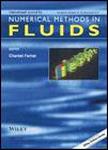版权所有:内蒙古大学图书馆 技术提供:维普资讯• 智图
内蒙古自治区呼和浩特市赛罕区大学西街235号 邮编: 010021

作者机构:Guangxi Minzu Univ Sch Artificial Intelligence Nanning Peoples R China Guangxi Minzu Univ Guangxi Key Labs Hybrid Computat & IC Design Anal Nanning Peoples R China
出 版 物:《INTERNATIONAL JOURNAL FOR NUMERICAL METHODS IN FLUIDS》 (Int. J. Numer. Methods Fluids)
年 卷 期:2025年第97卷第4期
页 面:665-673页
核心收录:
学科分类:080704[工学-流体机械及工程] 080103[工学-流体力学] 08[工学] 0807[工学-动力工程及工程热物理] 0701[理学-数学] 0812[工学-计算机科学与技术(可授工学、理学学位)] 0702[理学-物理学] 0801[工学-力学(可授工学、理学学位)]
基 金:2024 Centralized Support for Local Universities Reform and Development Funding Project
主 题:Bayesian hyperparameter optimization flow field reconstruction and prediction fluid dynamics Kolmogorov-Arnold network physics-informed neural network
摘 要:Physics-informed neural network (PINN) has become a potential technology for fluid dynamics simulations, but traditional PINN has low accuracy in simulating incompressible flows, and these problems can lead to PINN not converging. This paper proposes a physics-informed neural network method (KA-PINN) based on the Kolmogorov-Arnold Neural (KAN) network structure. It is used to solve two-dimensional and three-dimensional incompressible fluid dynamics problems. The flow field is reconstructed and predicted for the two-dimensional Kovasznay flow and the three-dimensional Beltrami flow. The results show that the prediction accuracy of KA-PINN is improved by about 5 times in two dimensions and 2 times in three dimensions compared with the fully connected network structure of PINN. Meanwhile, the number of network parameters is reduced by 8 to 10 times. The research results not only verify the application potential of KA-PINN in fluid dynamics simulations, but also demonstrate the feasibility of KAN network structure in improving the ability of PINN to solve and predict flow fields. This study can reduce the dependence on traditional numerical methods for solving fluid dynamics problems.